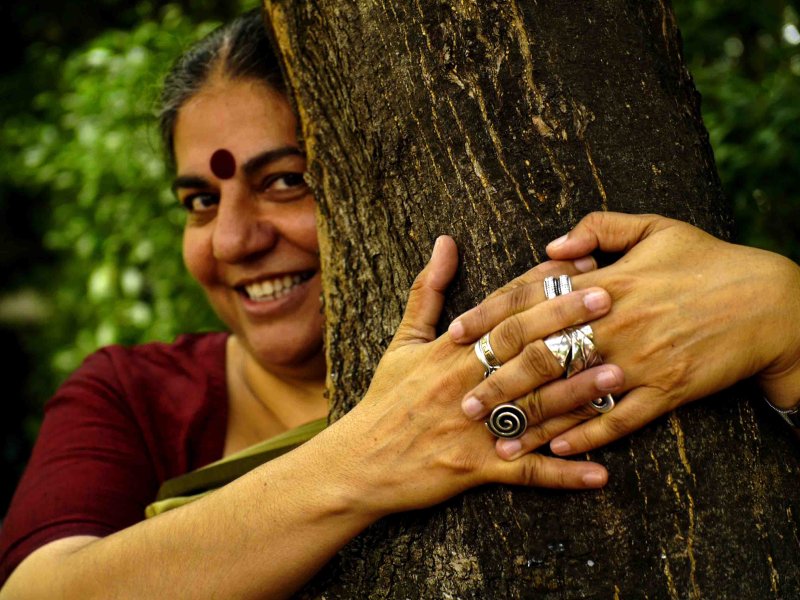Vandana Shiva is a chain reaction that cannot be stopped. It can only be witnessed from a safe distance. The process of achieving critical mass was a slow and arduous one and to understand it one has to go back to her formative years in activism.
Back in the early 1980s Shiva was, along with Ashis Nandy and Shiv Vishwanathan, at the forefront of a bizarre Alternate Science movement. It helped that none among them was a practising scientist. Indeed, they prided themselves in being anti-rationalist, anti-enlightenment, and violent opponents of “scientific temper.” (PDF) In a book of essays: Science, Hegemony and Violence: A Requiem for Modernity, Shiva wrote, “Contrary to the claim of modern science that people are ultimately the beneficiaries of scientific knowledge, people – particularly the poor – are its worst victims.”
This war on science reached its zenith in Shiva’s most famous book, Staying Alive: Women, Ecology and Development. From every page, from almost every paragraph, the battle-cry is audible – that modern science has made Mother Earth, women, and colonised cultures passive and powerless.
This careful mixing of pop-psychology with environmentalism and feminism is a masterstroke, for it brings together to the vanguard, like placard-carrying tributaries of frothing-from-the-mouth peoples, the two major streams of twentieth-century protest culture. That it is dangerous is not quite obvious at first sight. Feminism remains a laudable counter-weight to patriarchy, in literature, in science, even in politics. It may have run its course in the West but not so in India. Vandana knew this.
For woman and earth to be emancipated, science had to be made the villain. On such foundations was Navdanya established. Requests for appearances and lectures poured in, so did donations, until Vandana likely realised anti-science rants could damage the long-term prospects of an environment NGO. And so, a physics M.S. graduate who had earned her PhD in philosophy became a scientist: “Yes, I am an ecologist and feminist. But I am also a scientist…a trained Quantum Physicist.” The makeover was complete. Forbes called her one of the seven most powerful feminists, lecture-circuit agencies made a beeline eager to cash in, with universities allegedly paying as much as $40,000 and a business class ticket to hear her. (PDF) She was even nominated for the Nobel Peace Prize.
The tragedy is that it need not have turned out like this. Shiva’s NGO Navdanya has done creditable and pioneering work in the field of seed know-how and Organic Farming. Her scientific ideas concerning these subjects make sense, they really do. Organic Farming (dealt in detail in Part V) is not voodoo, it works and it is good for the environment. Many Indian states such as Sikkim are heavily involved in it.
The problem comes when Shiva claims Organic Farming and GM Foods cannot co-exist, that her solutions for sustainability are the only solutions. This is clearly not the case. Had the world depended entirely on Organic Farming for its needs it would have required an additional three billion hectares of land, especially as Organic Farming provides up to 34 percent lower yields than conventional farming.
Shiva’s mind is made up. A science-hater-turned-philosopher-turned-activist-turned-quantum physicist is busy sowing seeds of doubt among the gullible. Fools who challenge her will only end up supplementing those seeds with the nourishment they need, for they have now taken root and shall one day, just like their progenitor, bloom into magnificent trees laden with lies and deceit, ripe and pluckable. As the Navajo saying goes, you can’t wake a person who is pretending to be asleep.
Read the full, original article: Exploring GM foods (Part III – The third eye of Shiva)































